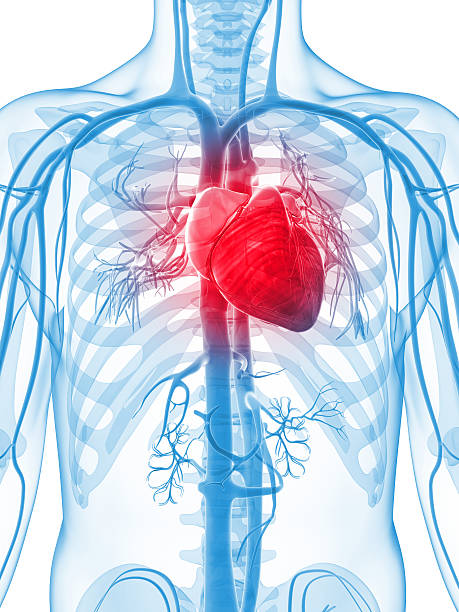The Internal Organs in
Traditional Chinese Medicine
Correlation with the Five Elements
Chinese medicine has a completely different view of the body’s internal organs from that of Western medicine. TCM places more emphasis on understanding processes and relationships, rather than looking at isolated physical structures and things that can be precisely measured. Thus, the internal organs (referred to collectively as the ‘zang-fu’) are regarded primarily as functional units rather than discrete anatomical organs; and for this reason, they are frequently referred to as ‘organ systems’ or ‘organ networks’, when discussed in English language textbooks on TCM.
It follows, therefore, that the internal organs of TCM may be are understood in various ways. The most important concept is that the physical organ (e.g. the Liver) is viewed as representing all of the associated functional activities, as well as physical structures, that belong to a particular Element (in this case, Wood). This will become clearer if you refer to the chart provided in the section on the Five Elements. In this way, a ‘Liver’ disorder may manifest with angry outbursts, eye problems, and brittle finger nails. Alternatively, a Lung disease may be revealed by nasal discharge, sore throat, low energy and reluctance to speak.

The ‘Zang’ and the ‘Fu’ organs
The internal organs are described in terms of five pairs of organs: one pair belonging to each of the five Elements. The relatively more solid organs (i.e. the viscera) are referred to collectively as the ‘Zang’. These are the Liver, Heart, Spleen, Lung and Kidney. The main physiological functions of the Zang organs are to manufacture and store the basic physiological substances, including the Qi, Blood, body Fluids, and Kidney Essence.
| WOOD | FIRE | EARTH | METAL | WATER |
|---|---|---|---|---|
| Liver | Heart | Spleen | Lung | Kidney |
The hollow organs (bowels and bladders), are referred to collectively as the ‘Fu’. These are the stomach, small intestine, large intestine, gallbladder and urinary bladder. The main physiological functions of the Fu organs are to receive and digest food, absorb nutrients, transmit and excrete wastes.
The Fu Organs
| WOOD | FIRE | EARTH | METAL | WATER |
|---|---|---|---|---|
| Gallbladder | Small Intestine | Stomach | Large Intestine | Bladder |
Paired organs
The Zang organs are regarded as Yin because they are more internal (i.e. they exist at a deeper level in the body), are relatively more solid and are mainly concerned with storage. The Fu organs are regarded as Yang because they are more external (i.e. they exist at a more superficial level in the body), are hollow, and are mainly concerned with transmitting. Each of the Zang organs is linked with one of the Fu organs. This is referred to as an internal-external relationship. Thus we have:
- Liver – Gallbladder
- Heart – Small Intestine
- Spleen – Stomach
- Lung – Large Intestine
- Kidney – Urinary Bladder
Organs unique to TCM
In addition to the above five pairs of Zang-fu organs there exist several others that fall outside this method of categorization. The sixth pair consists of the Pericardium (a.k.a. the ‘Heart Governor’) and the triple Jiao (a.k.a. the ‘Triple Heater’ or ‘Triple Burner’). The former is regarded as the Zang, while the latter is regarded as it’s paired Fu. Both of these ‘organs’ consist only of groups of specific functions, and neither are represented by a single anatomical organ. The triple Jiao is best understood as the functional relationship between the various organs that are involved in fluid transformation, and includes the Lung, Spleen, Kidney, Small Intestine and Urinary Bladder. The Pericardium is closely related to the Heart and is considered to act as a protective shield for the Heart, both physically and emotionally. Most texts classify this pair under Fire.
The ‘extraordinary’ Fu organs
There are also several additional Fu organs, including the brain and the uterus. These are classified as ‘extraordinary’ because, unlike the other Fu organs they do not receive, transform and transport nutrients or fluids. The brain and uterus are generally classified together with the Kidney.
Main physiological functions
The main functions of the five organ-systems are summarized below:
The Spleen (Earth) deals with the transformation of ingested nutrients into bodily substances and also deals with the production of Qi and Blood.
The Liver (Wood) stores of the Blood when the body is at rest, controls the menstrual cycle, and ensures that the circulation of the Qi is smooth and even.
The Heart (Fire) houses the Spirit (consciousness, mind, spirit) and is concerned with the production and circulation of the Blood.
The Lung (Metal) controls the final production and the circulation of the Qi and body Fluids that activate and nourish the body. One aspect of this is that it sends Qi and Fluids to the Kidney.
The Kidney (Water) stores and produces the Essence, which is concerned with reproduction, growth, development and maturation.
Key features of the TCM approach
As you can see from this brief introductory discussion, the TCM approach is more philosophical and universal in its scope, taking a broad understanding of events in the natural world as the basis for understanding the processes that occur within the human body and mind. This viewpoint underlies all of TCM physiology and pathology as well as diagnosis and treatment.
As with Yin-Yang, we have a system that begins with simplicity and, because it is universal in scope, allows for increasing degrees of complexity. Thus, although these concepts may be easily understood, it takes many years of study and experience to be able to apply them successfully in the clinic. Once again, we would like to caution against self-prescribing and recommend that you seek the services of a qualified and registered TCM practitioner for your healthcare needs.